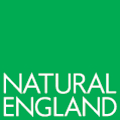Submitted by PBMS Admin on
This latest report outlines the compounds detected most frequently in barn owls that died in 2019.
The compounds detected most frequently in barn owls that died in 2019 were bromadiolone, brodifacoum and difenacoum. Overall, 87% of the owls had detectable liver residues of one or more SGAR, similar to that in earlier years. Comparing 2019 to baseline years (2006 to 2012) there was also no change in (i) the percentage of owls with residues of flocoumafen and difethialone; (ii) the ratio of owls with high to low concentrations for brodifacoum, bromadiolone, difenacoum and summed SGAR residues; and (iii) concentrations of difenacoum, bromadiolone and summed SGAR residues. There was an increase in concentrations of brodifacoum residues in owls in 2019.
Please see PBMS reports | The Predatory Bird Monitoring Scheme (ceh.ac.uk)






